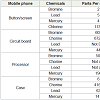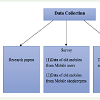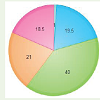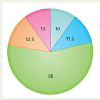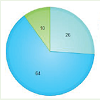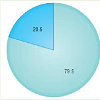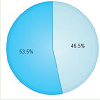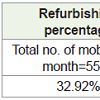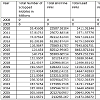Research Article
Future Forecasting Pollutants in Cell Phone Waste
Swapnali Lotlikar*
Information Technology Department, Poornima University, Jaipur, India
Corresponding author: Swapnali Lotlikar, Information Technology Department, Poornima University, India, Tel: 9820797881; E-mail: skhanolkar@rediffmail.com
Citation: Lotlikar S. Future Forecasting Pollutants in Cell Phone Waste. J Environ Soc Sci. 2017;4(2): 130.
Copyright ©2017 Lotlikar S. This is an open access article distributed under the Creative Commons AttributionLicense, which permits unrestricted use, distribution, and reproduction in any medium, provided the original work isproperly cited.
Journal of Environmental and Social Sciences | Volume: 4, Issue: 2
Submission:23/10/2017; Accepted: 20/11/2017; Published: 21/11/2017
Abstract
The use of mobile phones has rapidly increased. The e-waste generated by obsoleted electrical and electronic equipment is growing fast. The recycling, reuse and refurbish is an efficient way to control e-waste. The survey tried to focus on two sets of stakeholders, end mobile users and mobile shopkeepers. An objective of the survey was to understand the action taken on old mobiles by end users and mobile shopkeepers. Based on the survey result, the total number of scrapped, refurbished and recycled mobiles was estimated. The study shows that action taken against exchange mobiles, against old mobiles and those mobiles which are not working. The finding of the survey shows that the old mobiles are discarded every after two years. Most of the discarded mobiles go through the recycling or refurbishing process. Few of those mobiles go as a scrap. Sales data of past 8 years was collected through secondary research to understand the probable e-waste generated by the mobiles This paper has estimated the total number of refurbished, recycled and scrap mobiles and pollution caused by these mobiles if not recycled properly till year the 2026.
Keywords:
Mobile phones; Refurbished; Recycled; E-waste
Introduction
In the earlier days, the disposal of electronic devices are mainly due to damages, but in today technology boom, damages are no longer the only reason for disposing of electronic devices, where technical worn out, new product features, better aesthetics, and emotional value are having strong influences to the disposal of the devices. International Data Corporation (IDC) is the world’s leading technology media, events and Research Company. According to IDC India is one of the fastest growing smartphone markets in the world. In terms of individual vendor positions, Samsung leads the smartphone market in India. IDC publishes quarterly mobile sales data and the vendors in India. This data was used as a secondary data source for the mobile sales data in India. “Healthy stuff’s” organization publishes data on toxic elements present in electronic devices (Table 1). This data on iPhone and Samsung Galaxy S3 was obtained from this site. Due to their hazardous material content, mobile waste may cause environmental and health problem. On another hand, if mobiles are recycled properly then it contains high-value materials such as gold, silver, copper, aluminium, and plastic. A preliminary survey was done through questionnaire both online and personal interview for mobile users as well as mobile shopkeepers respectively. The survey was done in the suburban area in Mumbai. Approximate 200 mobile shopkeepers and 300 mobile users participated in this preliminary survey. This paper predicts the number of mobiles which can be refurbished, recycled and scrap till 2018.
Methodology
major objective of this study is:-
To investigate old mobile recycling, scrap, and refurbishing percentage
1. To find total number of mobile sales per year over multiple years
2. To analyze the replacement rate of mobiles and action taken on old mobiles.
Data is collected from different sources:-
Mobile sales data in millions from the year 2008 to 2016 in India (Figures 1)
This study was conducted through a survey questionnaire among mobile users and shopkeepers. Battery recycling and primary survey from mobile users and mobile shopkeepers. The questionnaire has mobile manufacturer name, model number etc. questions and was sent as a Google form to all users. The survey is done in Santacruz, Vileparle and Andheri area. 313 users responded to the survey.
Results and Discussion
How often are mobiles change? (Figures 2)
Reasons for changing mobile (Figures 3)
Actions are taken on old mobiles by Mobile shops 64% shopkeepers send their mobiles for scrap, 26% refurbish and resale it, 10% of shopkeepers gives it to a recycling company (Figures 4).
Actions are taken on exchanged mobiles by mobile shops (Figures 5)
Actions are taken on not working mobiles by mobile shops (Figures 6).
Analysis of old mobile data from mobile shop
The average was taken to find the percentage of recycling, refurbishing, and scrap. On an average the data of 16789 mobiles are
Collected from approximated 200 mobile shops in one month. The following is distribution for the refurbishing, recycling and scrapped mobiles.
It is inferred that the refurbishing, recycling, and scarp percentage is as follows (Table 2)
Prediction of pollutants based on the above data
After applying linear regression technique on scrapped data. The following is the total pollutant predicted till 2026 (Table 3).
Conclusion
Information shows that 40% of the users are changing their mobile every after two years. Moreover 56% of users which is more than the quarter wanted to change for upgrading new technology. 55 % of the mobiles are treated as scrap material. These results are discouraging. The 64% shopkeepers refurbish and sell the mobiles in the market. 53.5% mobiles will go for scrap. In India, the amount of mobilewaste generated is rising rapidly. With the increasing dependence on electronic and electrical equipment, the rise of E-waste generation is well expected in the country. However, the management of the same is a major challenged faced by the country. There is no large scale organized for the mobile waste recycling facility in India and the most of the recycling exists in the unorganized sector.
References
- Ansari NL, Ashraf MM, Malik BT, Grunfeld H (2010) Green IT awareness and practices: results from a field study on mobile phone related e-waste in Bangladesh. IEEE Int Symp Technol Society, pp. 375-383.
- Lee S (2012) Database management system as a cloud service. Database 5, no. 2.
- Nagurney A, Toyasaki F (2005) Reverse supply chain management and electronic waste recycling: a multitiered network equilibrium framework for e-cycling. Transp Res Part E Logist Transp Rev 41: 1-28.
- Terazono A, Murakami S, Abe N, Inanc B, Moriguchi Y, et al. (2006) Currentstatus and research on e-waste issues in Asia. J Mater Cycles Waste Manag 8: 1-12.
- Xu Z, Xue X (2008) Three-tiered e-waste recycling supply chains based on revenue sharing. Adv Manag Inf Globalized Enterprises.
- Yuksel H (2009) An analytical hierarchy process decision model for e-waste collection center location selection. Comput Ind Eng, pp. 1684-1689.
- Ari V (2016) A review of technology of metal recovery from electronic waste. In: Mihai F (Ed.), E-waste in transition - from pollution to resource. CBS Publishers & Distributors Pvt. Ltd, New Delhi, India. pp. 188.
- (2000) Hazardous substance fact sheet. 01-06.
- Chemical properties of copper-Health effects of copper-Environmental effects of copper. Lenntech.
- Dvorsky G (2013) How to recognize the plastics that are hazardous to your health.
- Gayle D (2012) Chemical breakdown: the toxic substances inside your mobile phone.

